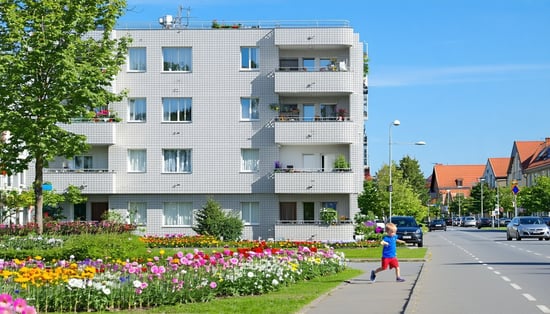When starting real estate investment, in addition to the property price, there are initial costs. The initial costs are approximately 15% of the purchase price, so for a 30 million yen property, approximately 4.5 million yen is required, and for a 70 million yen property, over 10 million yen is needed. This may vary depending on whether financing is available and the amount of your own funds, but in some cases, 20-30% of the property price is estimated as initial costs. In practice, initial costs for a 30 million yen property can range from 6 million to 9 million yen, and for a 50 million yen property, from 10 million to 15 million yen. As such, initial costs are significant, so beginners should accurately understand the breakdown and market rates and carefully plan their finances. This article focuses on properties targeted by individual investors, such as condominium units (single-room apartments) and single-building apartments, and explains the breakdown of initial costs, market rates, and specific points for reducing costs.
Breakdown and market rates of initial costs for real estate investment
There are various items included in the initial costs of real estate investment. The following is a list of the main items, along with an overview and market rates.
- Down payment (own funds): This is the portion of the property price that cannot be covered by financing and must be paid from your own funds. Generally, 10–30% of the property price is set as the down payment. For example, for a property priced at 50 million yen with a 20% down payment, the down payment would be 10 million yen. The higher the down payment, the more favorable the loan approval process tends to be; however, investing too much of your own funds can also carry the risk of depleting your available cash. While full financing (0% down payment) is an option in recent years, it has become increasingly difficult for first-time buyers to secure financing with a 0% down payment.
- Brokerage Fee: This is the success fee paid to the real estate brokerage company. The maximum amount is legally capped at 3% of the sales price plus 60,000 yen plus consumption tax (for sales prices exceeding 4 million yen). For example, for a 30 million yen property, the maximum brokerage fee would be approximately 1,056,000 yen (including tax). This fee is paid when the purchase and sale contract is concluded. If the seller is a real estate company (direct sale), no brokerage fee is required. As a general rule, the fee is approximately 3% of the property price, so for a 70 million yen property, approximately 2.1 million yen would be required.
- Stamp duty (stamp tax): This is the cost of the revenue stamps affixed to the sales contract and loan agreement. It is levied based on the contract amount of the real estate sales contract. For example, for a contract amount of 50 million yen, the stamp duty is approximately 60,000 yen, and for 110 million yen, approximately 90,000 yen (※reduction measures may apply depending on the timing of the contract). Stamp tax increases with the contract amount but is relatively small compared to other fees, typically ranging from several tens of thousands to hundreds of thousands of yen.
- Registration Fees (Registration Tax): Taxes incurred when transferring property ownership or establishing a mortgage. The taxable standard is the fixed asset tax assessment value of the property (approximately 70% of the market value), multiplied by the applicable tax rate. The tax rates are as follows: 2.0% for the transfer of ownership of land and used buildings, 0.4% for the preservation registration of residential buildings, and 0.4% for the establishment of a mortgage, among others. For example, if you purchase a property (land plus building) worth 70 million yen and obtain a loan, the registration tax would be approximately 600,000 to 700,000 yen. In addition, if you hire a judicial scrivener to handle the registration procedures, you will need to pay judicial scrivener fees. If you do not hire a judicial scrivener, no fees will be incurred, but since registration requires specialized knowledge, it is generally recommended to entrust the process to a judicial scrivener. The fee for a judicial scrivener is approximately 100,000 to 150,000 yen.
- Loan processing fees: These are fees paid to banks or other financial institutions when applying for a loan. Financial institutions may charge either a fixed amount (e.g., 100,000 to 200,000 yen) or a percentage of the loan amount (e.g., 2% of the loan amount). Recently, a percentage-based fee such as “2.2% of the loan amount (including tax)” has also been adopted. For example, if the loan amount is 30 million yen and the fee rate is 2.2%, the processing fee would be 660,000 yen. The larger the loan amount, the higher the fees, so when selecting a lender, be sure to confirm the amount and calculation method of these administrative fees. As a general guideline, they are approximately 1–3% of the loan amount, but with a fixed-rate type, they may be kept to around 100,000 yen.
- Loan guarantee fee: This is a fee paid to a guarantee company in case the loan repayment is delayed. Many investment loans require the use of a guarantee company, and a guarantee fee is incurred. Payment methods include a lump-sum upfront payment of approximately 1–2% of the loan amount (external framework method) and an indirect payment by adding approximately 0.2% per year to the interest rate (internal framework method). In the former case, for example, if the loan amount is 50 million yen, the guarantee fee would be approximately 500,000 to 1 million yen. Some financial institutions may offer cases with zero guarantee fees (no guarantee company required). If the guarantee fee is paid upfront, a portion may be refunded if the loan is prepayment and the term is shortened. Generally, the total loan-related fees, including the guarantee fee, amount to approximately 2% of the loan amount, and it is advisable to calculate this together with the aforementioned loan processing fees.
- Fire insurance and earthquake insurance: These are the costs of property damage insurance for the property. Fire insurance is almost mandatory for investment properties, and may be required as a condition of the loan. Fire insurance covers damage to buildings and contents caused by fire, lightning, wind, and water, and earthquake insurance (covering damage caused by earthquakes, volcanic eruptions, and tsunamis) may also be required as needed. Premiums vary significantly depending on factors such as the property's structure (fire-resistant or not), location, coverage details, and insurance period. For example, for a reinforced concrete condominium unit, fire insurance is relatively affordable, with an example premium of approximately 70,000 to 80,000 yen for a 25-square-meter condominium over a five-year period. On the other hand, wooden single-family apartments have higher fire insurance premiums, which can reach hundreds of thousands of yen depending on the building's appraised value and age. Earthquake insurance premiums are set by the government based on the building structure and location, and there are no differences between insurance companies. In general, fire insurance and earthquake insurance premiums range from several tens of thousands to hundreds of thousands of yen. It is advisable to obtain quotes and compare multiple companies when purchasing a property.
- Settlement fees (fixed asset tax, urban planning tax, management fees, and maintenance reserve fund settlement): In real estate transactions, there is a settlement of fixed asset tax, etc., as ownership changes mid-year. Fixed asset tax and urban planning tax are levied annually on the owner as of January 1, so the seller has already paid the full amount for the year at the time of handover. Therefore, the tax amount corresponding to the period after the handover date is calculated on a daily basis, and the buyer pays the seller the difference. For example, if a property with an annual fixed asset tax of approximately 200,000 yen (depending on the appraised value) is handed over at the end of June, the buyer would bear the remaining six months' worth of approximately 100,000 yen. Additionally, for condominiums, management fees and repair reserves are also settled on a daily basis if ownership changes mid-month. These settlement amounts vary depending on the property and the timing of the handover, but it is advisable to budget for an initial cost of approximately tens of thousands to hundreds of thousands of yen.
- Real Estate Acquisition Tax: This is a local tax levied once when acquiring real estate. The tax rate is generally 3% for land and residential properties (4% for non-residential properties), but the taxable base is calculated based on the assessed value of the fixed assets, and various tax relief measures such as special provisions for residential land are available. The notice for payment of real estate acquisition tax is typically sent some time after acquisition, and it is not paid immediately at the time of purchase. However, since the amount can be significant, it is advisable to include it as part of the initial expenses in your financial plan.
- Repair and renovation costs (initial maintenance costs): The above refers to the so-called “miscellaneous expenses” associated with the contract and registration, but it is also important to consider the costs of repairs or renovations that may arise immediately after purchasing the property. Especially for used properties, repairs to equipment or interior renovations may be necessary immediately after purchase. In the case of condominiums, indoor cleaning and equipment inspections may suffice before renting out the unit, but for single-family apartments, significant repair costs such as roof or exterior wall repairs and common area maintenance may arise initially. While new properties are unlikely to require major repairs in the near term, used properties may incur repair costs sooner depending on their age. Therefore, it is important to either allocate approximately a few percent of the property price as a repair reserve fund or thoroughly inspect the property's condition in advance and calculate the necessary initial repair costs.
The above is a breakdown of the main initial costs. While there may be some variations depending on individual circumstances, estimating the initial costs as a percentage of the property price can help in planning. Generally, the proportion of initial costs relative to the property price may vary depending on financing conditions. If you can purchase the property under conditions close to a full loan, the initial costs will be approximately 15% of the property price, and if the proportion of your own funds increases, it may exceed 20-30%. Please simulate your investment plan and consider a reasonable amount of your own funds and loan terms.
Specific points to reduce initial costs
There are several strategies and negotiation techniques to minimize the burden of initial costs. Below are some points that are easy to implement even for beginners in real estate investment.
- Select land-value properties or properties with high asset value: “Land-value properties” refer to properties where the sales price is close to the land's value (such as assessed land value or market price), with the building value being nearly zero. Such properties are easier for financial institutions to appraise, increasing the likelihood of securing a full loan. Similarly, high-quality properties with strong asset value (such as those in prime locations with high rental demand) tend to have higher collateral appraisals, enabling the securing of larger loans. This allows you to reduce the initial costs by minimizing the down payment. However, land value properties are often older, so consider the risk of future repairs. Additionally, properties with high asset value tend to have higher purchase prices, so it is important to comprehensively assess the income-expense balance.
- Seek support from real estate companies with strong financing connections: If you do not have connections with financial institutions, it is advisable to engage a real estate company with expertise in arranging financing. Real estate companies vary in the number of financial institutions they partner with and their track record, and those skilled in securing financing may be able to negotiate favorable terms such as “down payment of X% with financing available.” In fact, companies with extensive financing experience often have strong relationships with banks, enabling even beginners to secure favorable loan terms. Some real estate companies may post financing examples on their websites, so refer to such information to select a reliable agent.
- Reduce the down payment or utilize miscellaneous expense loans: Reducing the down payment, which accounts for the largest portion of initial costs, can minimize the amount of out-of-pocket expenses. As mentioned earlier, selecting properties that are easy to appraise or searching for loans with the highest possible loan-to-value (LTV) ratio by approaching multiple financial institutions can help reduce the down payment. However, it is important to note that reducing the down payment increases the loan amount, leading to heavier monthly repayment burdens. It is essential to balance this with a repayment plan that is manageable. Additionally, you can use a separate loan specifically for miscellaneous expenses. Some banks offer loan products that cover initial expenses such as registration fees and insurance premiums, allowing you to start with minimal out-of-pocket costs. However, this is still a loan, so interest costs will apply. When utilizing a down payment or miscellaneous expense loan, simulate the cash flow after the loan is secured and confirm that the investment will be financially viable.
- Review fire insurance premiums: Fire insurance premiums vary depending on the coverage and insurance company, so comparing quotes may help reduce your premium burden. Determine the coverage you need and obtain quotes from multiple companies to avoid excessive coverage or overpriced insurance. For example, if the property is located in an area with low flood risk, you may be able to exclude flood coverage, or set the building appraisal value appropriately to reduce premiums. Additionally, some companies offer discounts for long-term contracts, so consider bundling policies to secure lower rates. If you find it difficult to make a decision on your own, it is advisable to consult an insurance agent or financial planner. Note that in some cases, you may be required to enroll in a specific insurance plan as a condition of the loan. In such cases, we recommend comparing conditions including insurance premiums.
- Negotiating the property price and ancillary costs: If you can lower the price of the property itself, various costs proportional to the price, such as brokerage fees, will also decrease. Negotiating the price with the seller is not easy, but targeting properties that have been on the market for a long time or those with room for negotiation (price reduction) may be a good strategy. Even a few percent reduction in the price can result in significant savings on the total amount.
By implementing the above points, you can reduce the initial costs. However, be careful not to make reducing initial costs the sole objective. Reducing the down payment excessively may strain your monthly cash flow, and choosing a property solely based on its low price may result in prolonged vacancies, which defeats the purpose. The key is to balance initial costs with investment returns and risks. For example, you might end up buying a low-yield one-bedroom apartment because you have limited funds, only to find yourself making monthly payments out of pocket. While it is important to reduce initial costs as much as possible, comprehensively evaluating the property's profitability and future management plan is the key to success.
Summary
Initial costs for real estate investment vary depending on the property price and loan conditions, but as a general guideline, you should aim for approximately 15–20% of the property price. In some cases, the down payment ratio may reach nearly 30%, but depending on the conditions, it can also be kept as low as the low 10% range. The main components of initial costs include brokerage fees, various taxes, loan-related expenses, and insurance premiums, and it is important to prepare for each of these with an understanding of their typical costs. Even for small-scale investments such as condominium units or single-building apartments, initial costs can amount to several hundred thousand dollars.
However, by focusing on the cost-saving points mentioned earlier, it is possible to efficiently reduce initial costs. Consider negotiating brokerage fees, being strategic in property selection, and leveraging favorable loan terms through careful selection of financial institutions. Seeking advice from professionals is also effective. By consulting with real estate agents, financial institutions, and financial planners, you can develop a detailed financial plan that accounts for all potential costs, including those that are often overlooked.
Accurately understanding and controlling initial costs is the first step toward successful real estate investment. Start with a budget that you can comfortably manage, maintain sufficient cash reserves for future operations, and make wise investment decisions. We encourage you to use the information in this article as a reference and begin your real estate investment journey with confidence.



![[Archive Edition] A Complete Guide to Getting Started in Real Estate Investment for Beginners | How to Avoid Failure](https://app.ina-gr.com/hs-fs/hubfs/AI-Generated%20Media/Images/The%20image%20depicts%20a%20modern%20luxurious%20office%20space%20with%20large%20windows%20that%20let%20in%20ample%20natural%20light%20Sleek%20minimalist%20furniture%20fills%20the%20room%20including%20a%20polished%20wooden%20conference%20table%20surrounded%20by%20ergonomic%20chairs%20On%20one%20wall%20a%20large%20flatscreen-1.jpeg?width=550&height=395&name=The%20image%20depicts%20a%20modern%20luxurious%20office%20space%20with%20large%20windows%20that%20let%20in%20ample%20natural%20light%20Sleek%20minimalist%20furniture%20fills%20the%20room%20including%20a%20polished%20wooden%20conference%20table%20surrounded%20by%20ergonomic%20chairs%20On%20one%20wall%20a%20large%20flatscreen-1.jpeg)
